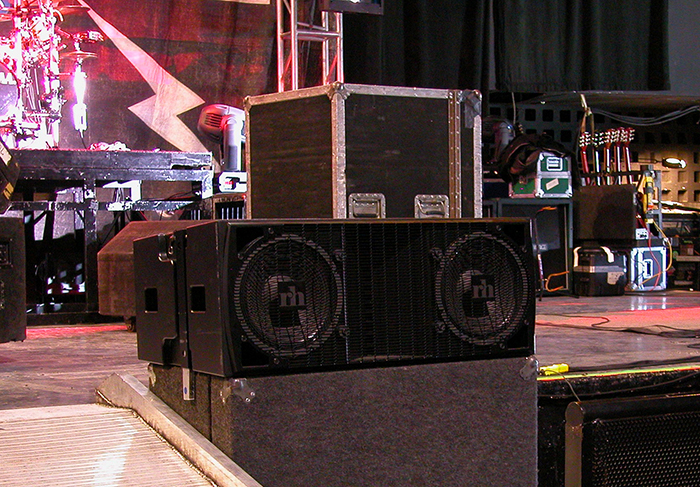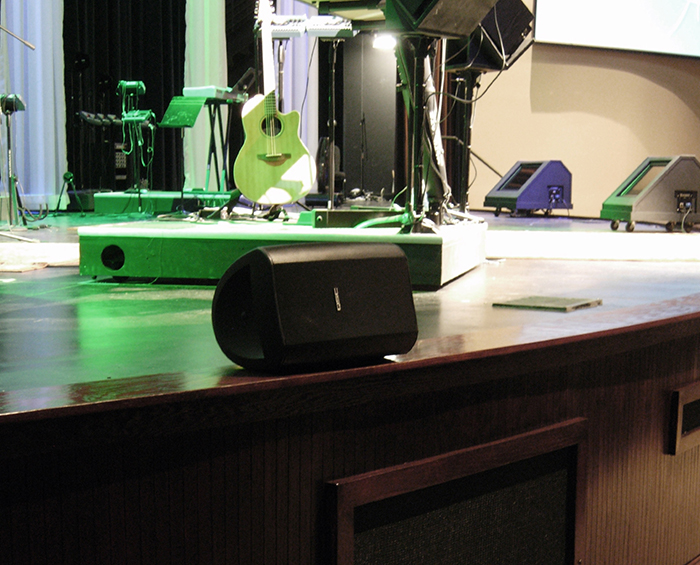Optimization Approach #2
An alternative approach to front fill alignment is popular in theatrical settings. On Broadway, many sound designers prefer to keep the illusion that sound is emanating from the actors on stage, not from the loudspeakers.
To accomplish this goal, mains and fills are delayed together or differently to be slightly late, to produce sound after the arrival of direct energy from the stage. This pushes audience attention forward, as due of the Hass Effect, humans localize sound based on the direction of first arrival.
Manipulating fill delay and level can also steer the image upwards and downwards. Increasing stage-mounted fill level or shortening delay time can pull the sonic focus down from the mains flown far above.
While these techniques are effective for a small area, precise time and level alignment is only possible at one location. Other areas remain uncalibrated and do not benefit from the steering.
An argument against this approach is that the acoustic crossover is not time aligned. Because of this, the position of equal level might see significant combing. Opponents of this technique argue that since there is an acoustic crossover, it might as well be in phase.
Proponents, however, cite that the pros of localization outweigh the cons of a less-than-smooth transition between systems. Some designers even calibrate for ideal sound at one specific one seat. This seat is then given to powerful critics whose published evaluations can make or break a show.
Another potential issue with localization approach is that it is subjective. Objective tools might still be used match some parameters of the sound, but the role of personal preference in the process inherently makes the alignment less repeatable. Here’s an example of how a system engineer might tune fills to achieve image localization:
1. Match (with ears or software measurement) the fills and mains in frequency response.
2. High pass (with ears or measurement) the front fills to reduce low frequency combing with mains, subs, and stage wash.
3. At the target location, use ears to subjectively adjust fill level to steer image toward the stage, not toward the mains or fills.
4. Use ears to subjectively adjust fill delay time slightly late to ensure localization to the stage, not the fills or mains.






